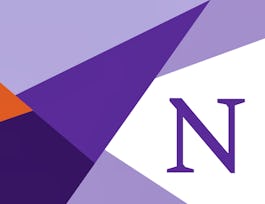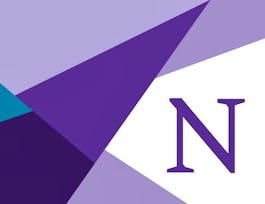This course will provide learners with a systematic general framework for analyzing persuasive influence situations. Learners will be able to identify different challenges faced by persuaders and to fashion appropriate strategies for addressing those challenges. The broad goal is to provide learners with not only an extensive persuasion tool kit, but also with an understanding of how different tools are useful in different situations. Specifically, the course will address four broad topics: strategies for influencing people’s personal attitudes; strategies for affecting social factors influencing behavior; strategies for affecting people’s perceived ability to undertake the desired behavior; and strategies for inducing people to act on their existing intentions.


Leadership Through Social Influence
This course is part of Organizational Leadership Specialization
Taught in English
Some content may not be translated

Instructor: Daniel J. O’Keefe
39,948 already enrolled
Included with 
Course
(1,278 reviews)
95%
Skills you'll gain
Details to know

Add to your LinkedIn profile
4 quizzes
Course
(1,278 reviews)
95%
See how employees at top companies are mastering in-demand skills

Build your subject-matter expertise
- Learn new concepts from industry experts
- Gain a foundational understanding of a subject or tool
- Develop job-relevant skills with hands-on projects
- Earn a shareable career certificate


Earn a career certificate
Add this credential to your LinkedIn profile, resume, or CV
Share it on social media and in your performance review

There are 4 modules in this course
This module discusses the first of four challenges that persuaders often face: getting people to think that what you’re proposing is a good idea. Sometimes, the reason people aren’t already doing what you want is that they’re not yet convinced that they should—that is, they don’t have sufficiently positive attitudes. This module discusses some fundamental strategies for changing people’s attitudes.
What's included
8 videos3 readings1 quiz
Even if people have positive attitudes about what you’re proposing, social factors—what they think other people do or want them to do—might lead them to not do what you want. This module discusses several ways in which such social considerations might pose a challenge for persuaders—and discusses how to successfully influence such factors.
What's included
4 videos1 quiz
People can have positive attitudes about your advocated action, and all the social considerations can be lined up positively, but still people might not engage in the desired behavior—because they don’t think they can perform the action. That is, they think the behavior is too difficult, too hard to do, they lack the ability. This module discusses strategies for addressing that challenge—strategies for influencing perceived behavioral ability.
What's included
4 videos1 quiz
Even when people already have the desired positive attitudes, positive social factors, and high perceived ability to perform the behavior—that is, even when they intend to engage in the behavior you want—even then they might fail to do so. When people have the intentions you want but aren’t acting on them, then the challenge is to get people to convert those intentions into actions. This module discusses several strategies that can encourage people to do that.
What's included
6 videos1 quiz
Instructor

Offered by
Recommended if you're interested in Leadership and Management

Northwestern University

Northwestern University

Alfaisal University | KLD

Alfaisal University | KLD
Why people choose Coursera for their career




Learner reviews
Showing 3 of 1278
1,278 reviews
- 5 stars
75.85%
- 4 stars
18.82%
- 3 stars
4.06%
- 2 stars
0.85%
- 1 star
0.39%
New to Leadership and Management? Start here.

Open new doors with Coursera Plus
Unlimited access to 7,000+ world-class courses, hands-on projects, and job-ready certificate programs - all included in your subscription
Advance your career with an online degree
Earn a degree from world-class universities - 100% online
Join over 3,400 global companies that choose Coursera for Business
Upskill your employees to excel in the digital economy
Frequently asked questions
Access to lectures and assignments depends on your type of enrollment. If you take a course in audit mode, you will be able to see most course materials for free. To access graded assignments and to earn a Certificate, you will need to purchase the Certificate experience, during or after your audit. If you don't see the audit option:
The course may not offer an audit option. You can try a Free Trial instead, or apply for Financial Aid.
The course may offer 'Full Course, No Certificate' instead. This option lets you see all course materials, submit required assessments, and get a final grade. This also means that you will not be able to purchase a Certificate experience.
When you enroll in the course, you get access to all of the courses in the Specialization, and you earn a certificate when you complete the work. Your electronic Certificate will be added to your Accomplishments page - from there, you can print your Certificate or add it to your LinkedIn profile. If you only want to read and view the course content, you can audit the course for free.
If you subscribed, you get a 7-day free trial during which you can cancel at no penalty. After that, we don’t give refunds, but you can cancel your subscription at any time. See our full refund policy.

